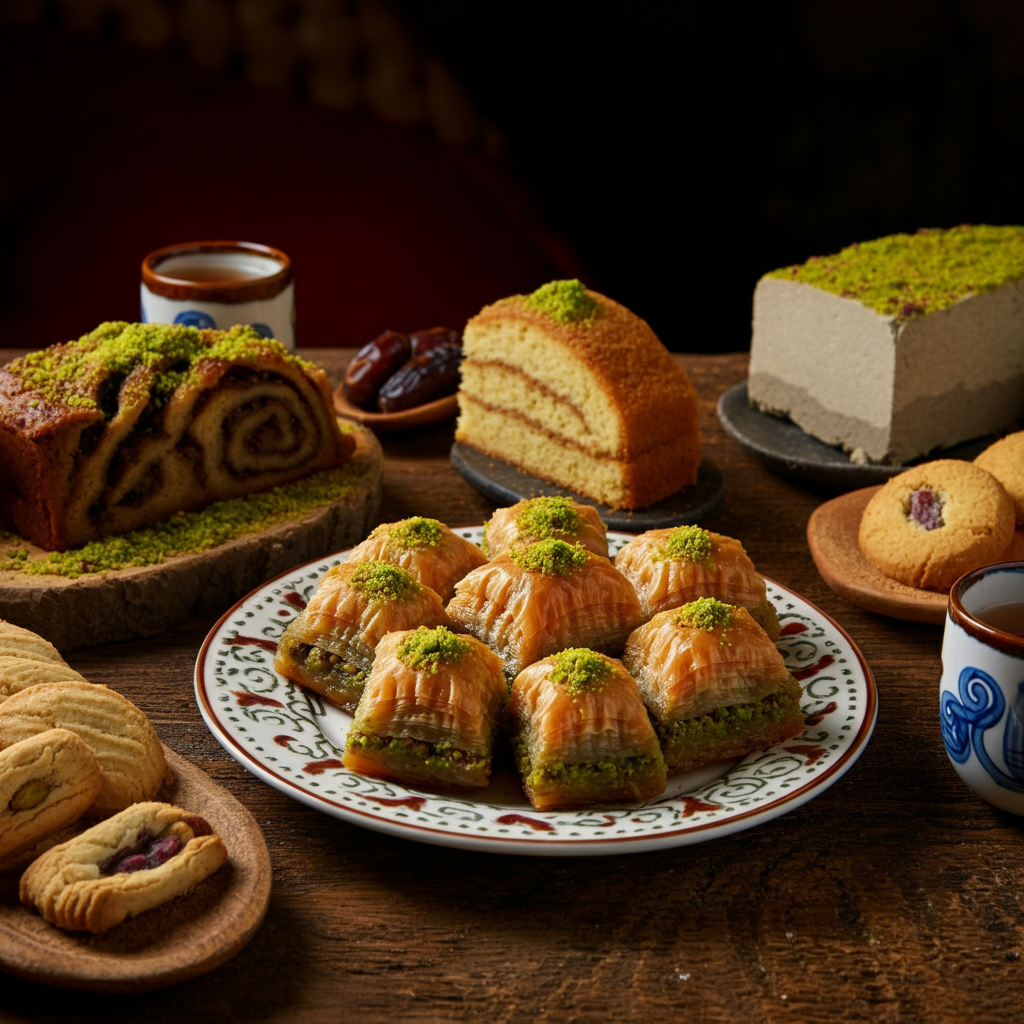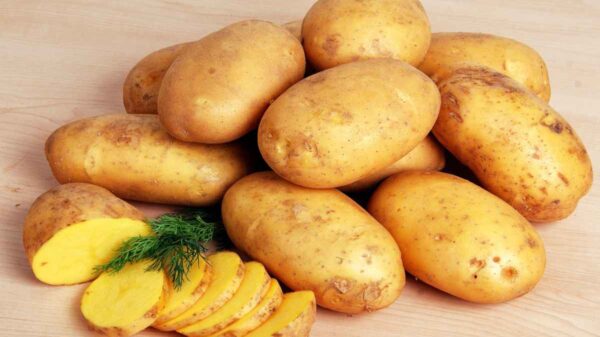Middle Eastern sweets are a feast for the senses, evoking images of vibrant markets, family gatherings, and long-standing traditions. From flaky pastries filled with nuts to creamy puddings and delicate confections, Arabic sweets are as diverse as the region itself. These desserts not only satisfy your sweet tooth but also tell stories of cultures, histories, and celebrations.
This blog takes you on a delicious journey into the world of Arabic sweets, highlighting popular treats, the art of their preparation, and the cultural significance behind them.
Popular Arabic Sweets
Arabic desserts are known for their rich flavors, aromatic spices, and unique textures. Here’s a closer look at some iconic Middle Eastern sweets:
Pistachio Baklava
Layers of paper-thin phyllo dough are filled with crushed pistachios and butter, then baked to golden perfection and drizzled with sweet syrup. This decadent dessert is beloved across the Middle East and beyond for its perfect balance of crunch and sweetness.
Moist Honey Cake
Imagine a cake infused with the natural sweetness of honey and a blend of warming spices. Moist and rich, this dessert is perfect for celebrations or simply as a compliment to an afternoon tea.
Rolled Date Cookies
Rolled date cookies (often known as Ka’ak or Maamoul) feature buttery pastry wrapped around sweet date paste, spiced with cinnamon and sometimes nuts. Finished with a dusting of powdered sugar, they are a staple during festive occasions, such as Eid.
Chocolate Babka
While Babka has European roots, the Middle Eastern version often incorporates rich chocolate intertwined with lightly spiced dough, creating a dessert that is as beautiful as it is delicious.
Halva
With its crumbly texture and distinct nutty flavor, Halva is made from tahini (sesame paste) and sugar. It comes in many variations, sometimes studded with pistachios or swirled with chocolate, offering a melt-in-your-mouth experience.
Kanafeh
Kanafeh is a luxurious dessert made with layers of shredded phyllo dough or semolina, filled with gooey cheese, and drenched in rosewater or orange blossom syrup. It’s crispy, cheesy, and irresistibly sweet.
Sahlab
This creamy milk-based pudding is thickened with sahlab powder and garnished with a sprinkle of cinnamon, nuts, or coconut. It’s a comforting treat, especially during colder months.
Maamoul
Maamoul cookies, iconic in Middle Eastern households, are a shortbread-like treat stuffed with dates, pistachios, or walnuts. Their intricate patterns are often made using a wooden mold, adding a visual delight to their delectable taste.
Stuffed Dates
Dates are a staple in Middle Eastern cuisine, and stuffing them with cream cheese, nuts, or almond butter elevates their natural sweetness into a refined treat. They’re not only delicious but also packed with nutrients.
Pistachio Cookies
These cookies marry the nutty flavor of pistachios with a buttery dough, often incorporating a hint of cardamom for added depth. Topped with a sprinkle of flaky salt, they are a perfect balance of sweet and savory.
The Art of Making Arabic Sweets
Making Arabic sweets is a complex process that combines traditional methods with exceptional ingredients, including rosewater, orange blossom water, honey, and nuts. The preparation of some desserts, like Baklava or Kanafeh, involves layering sheets of delicate phyllo dough, while others, like Maamoul, require precise mold designs.
Spices, including cardamom, cinnamon, and nutmeg, as well as flavorings such as rosewater, play a significant role in enhancing the taste of these desserts. Each recipe is carefully crafted, reflecting centuries of culinary tradition.
The Cultural Significance of Arabic Sweets
Arabic sweets are more than just desserts; they are culturally significant. They are central to celebrations and gatherings, from Ramadan Iftars to weddings and religious holidays like Eid. For instance, Maamoul is famously prepared and enjoyed during Eid, as families gather to create and share the cookies.
Sweets also symbolize hospitality. Offering guests coffee accompanied by Halva, Baklava, or any other sweet is a gesture of warmth and welcome in Middle Eastern households.
Many Arabic desserts also hold historical significance, having been passed down through generations and representing an essential part of the region’s heritage and identity.
Where to Find Arabic Sweets
If this has inspired your sweet tooth, here are a few ways to indulge:
- Local bakeries: Many cities host Middle Eastern bakeries that serve authentic Arabic sweets. Check your neighborhood for places that specialize in Baklava, Kanafeh, or Ma’amoul.
- Online stores: Numerous websites ship authentic Arabic sweets worldwide, so you’re just a click away from tasting the best the Middle East has to offer.
- Home recipes: Want to take on a culinary adventure? Numerous recipes for these desserts are available online, providing detailed instructions to recreate their flavors in your kitchen.
FAQs About Arabic Sweets
What are the main ingredients in Arabic desserts?
Common ingredients include nuts (pistachios, walnuts, almonds), honey, dates, phyllo dough, rosewater, orange blossom water, and tahini.
Can I make these desserts at home?
Absolutely! Many recipes for desserts, such as Baklava, Halva, or Maamoul, are beginner-friendly and widely available online.
How should I store Arabic sweets?
Baklava and other pastries can be stored in an airtight container at room temperature, while puddings like Sahlab should be refrigerated. Always check specific guidelines for each dessert.
Are Arabic sweets gluten-free?
Many desserts use wheat-based ingredients, like phyllo dough or semolina. However, options like Halva or stuffed dates are naturally gluten-free.
Indulge in the Sweetness of Arabic Desserts
The world of Arabic sweets is as rich and diverse as the cultures that created them. From flaky pastries to creamy puddings, these desserts promise to delight your taste buds and transport you to a world of tradition and flavor. Whether you’re enjoying a slice of Baklava in a bustling café or making Sahlab at home, these sweets are a celebration of life’s little joys.
Why wait? Explore these treats today, and bring a slice (or bite) of the Middle East into your life!










